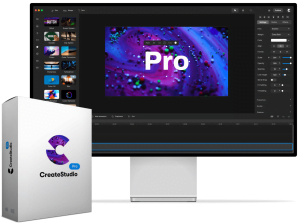How to Effectively Measure Return on Investment (ROI) for Digital Marketing Efforts
Digital marketing is one of the most powerful and cost-effective tools for businesses to reach their target audiences. Yet, when it comes to evaluating the success of digital marketing efforts, it can be hard to accurately calculate ROI.
What is return on investment?
First, let’s review what Return on Investment (ROI) means. ROI is a measure of the efficiency of an investment. It describes the profitability of an investment in terms of the amount of profit generated relative to the amount of money invested. The higher the ROI, the more profitable the investment is and the more successful your campaigns are likely to be.
How to Measure Return on Investment (ROI) for Digital Marketing?
Now that you understand what return on investment is, let’s look at how to measure it for your digital marketing efforts. Measuring ROI requires a combination of trackable metrics and careful analysis.
1. Determine Your Goals
The first step when measuring ROI is to define your goals. You need to have clear objectives for what you want to achieve with your digital marketing efforts before you can measure and analyze your ROI. This will allow you to determine which metrics will be the most important for tracking your success.
2. Set Trackable Metrics
Once you’ve determined your goals, you can begin setting trackable metrics. The key is to find metrics that are associated with your goals and will be easy to track. For example, if your goal is to increase website traffic, you could track metrics like website visitors, page views, and time spent on the site.
3. Analyze Your Results
The next step is to analyze your results. Evaluate the metrics you were tracking and look for correlations. Is there a correlation between website traffic and social media followers? Are there certain campaigns or content that performed better than others? Answering these questions will help you determine which strategies and tactics are working the best.
4. Calculate Your ROI
Once you’ve analyzed your results, you can calculate your ROI. To do this, you’ll need to subtract the cost of the digital marketing campaign from the profits generated by the campaign and then divide that number by the initial cost. The higher the number, the better your ROI is.
Tips for Improving Your Return on Investment
Now that you know how to measure your ROI, here are a few tips for improving your return on investment:
1. Track Conversions
Make sure you are tracking all of the conversions that result from your campaigns. This will help you determine which tactics are getting you the best results.
2. Test Different Platforms
Try testing different platforms to see which are performing the best. You may be surprised to find that certain platforms are better suited to your target audience and can get you a better return on your investment.
3. Utilize Automated Tools
Look for automated tools that can help simplify the process of measuring ROI. Automation can help you save time and effort, so you can focus on improving the effectiveness of your campaigns.
4. Track Specific Keywords
Tracking specific keywords can also help you measure the ROI of your digital marketing efforts. Look for keywords related to your campaigns and track their performance to see if they are helping you drive conversions.
Conclusion
Measuring the ROI of your digital marketing efforts is essential for improving your campaigns and getting the best results. By setting trackable metrics, analyzing the results, and calculating your ROI, you can ensure you are getting the most bang for your buck. Utilize the tips in this article to get started, and watch your campaigns grow.
Take action today: Start tracking your ROI and make adjustments to your digital marketing campaigns accordingly.






























